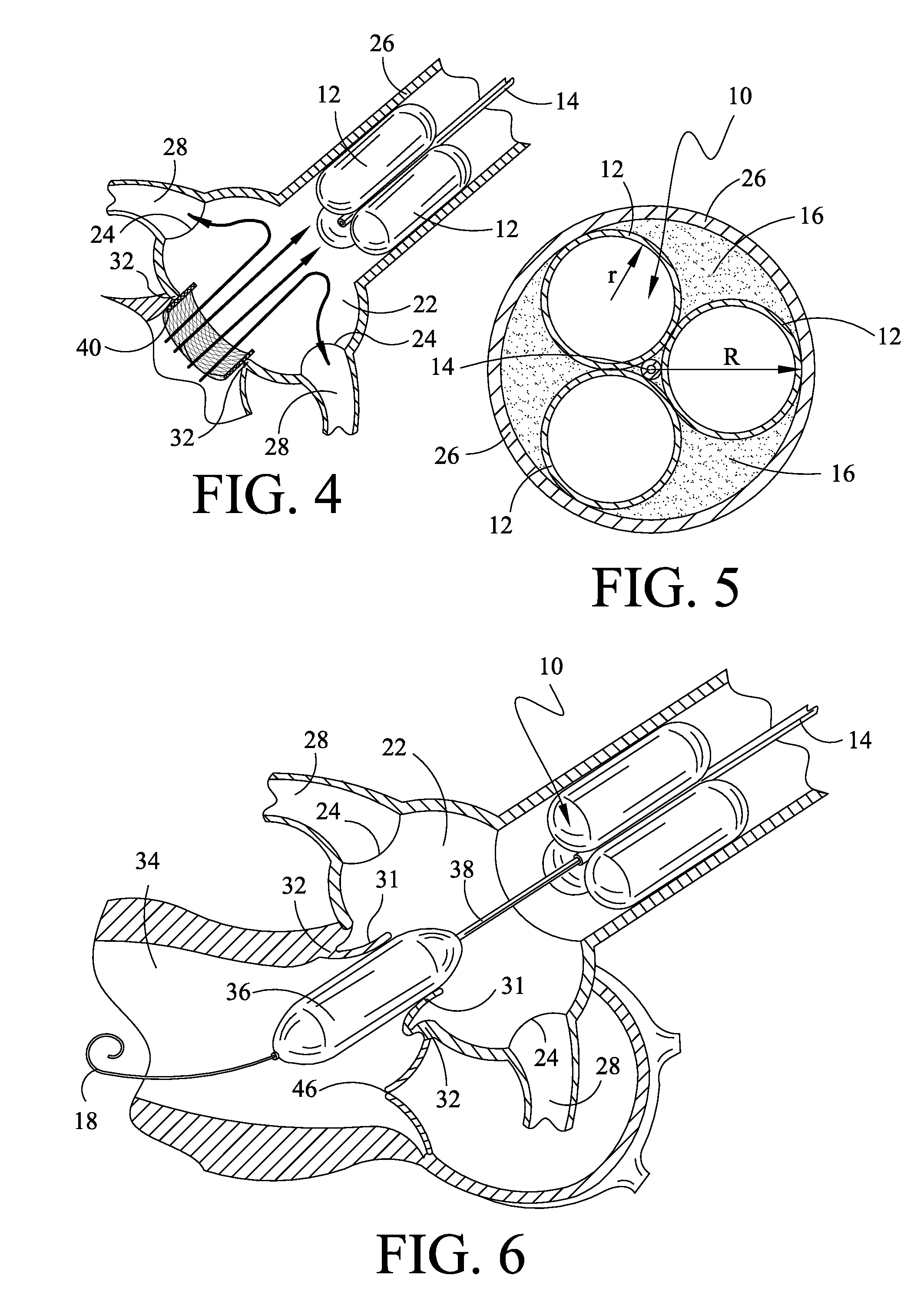Method and apparatus for percutaneous aortic valve replacement
a technology of aortic valve and percutaneous insertion, which is applied in the field of medical procedures and devices, can solve the problems of increasing the difficulty of precise placement of the pav, increasing the risk of device embolization, and affecting the safety of patients, so as to promote patient stability, promote continuous coronary perfusion, and minimize the stress of the cardiac muscl
- Summary
- Abstract
- Description
- Claims
- Application Information
AI Technical Summary
Benefits of technology
Problems solved by technology
Method used
Image
Examples
Embodiment Construction
Temporary Aortic Valve
[0024]Illustrated in FIG. 1 in cross section and FIG. 2 in side view is the temporary aortic valve (TAV) 10 of the present invention. According to the preferred embodiment shown, TAV 10 is comprised of three elongated supporting-balloons 12 of equal shape and size, contiguously arranged in parallel around a central guiding-catheter mechanism 14.
[0025]TAV 10 is placed within the ascending aorta 20 by means of catheter 14, and then inflated. FIG. 2 depicts TAV 10 deployed to a position within ascending aortic 20 just above (downstream from) the Sinus of Valsalva 22 and the coronary ostia 24. Once in position, supporting balloons 12 are inflated such that TAV 10 is lodged firmly against an inside wall 26 of ascending aorta 20.
[0026]Central catheter 14 sitting within the multi-balloon TAV 10 can be fashioned to the necessary French-size to accommodate the PAV device and related tools. The contiguous design of TAV 10 and central catheter 14 provide added mechanical ...
PUM
 Login to View More
Login to View More Abstract
Description
Claims
Application Information
 Login to View More
Login to View More - R&D
- Intellectual Property
- Life Sciences
- Materials
- Tech Scout
- Unparalleled Data Quality
- Higher Quality Content
- 60% Fewer Hallucinations
Browse by: Latest US Patents, China's latest patents, Technical Efficacy Thesaurus, Application Domain, Technology Topic, Popular Technical Reports.
© 2025 PatSnap. All rights reserved.Legal|Privacy policy|Modern Slavery Act Transparency Statement|Sitemap|About US| Contact US: help@patsnap.com



